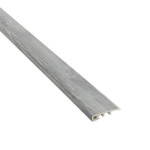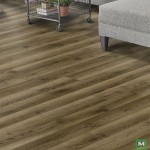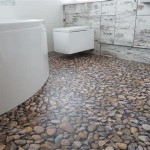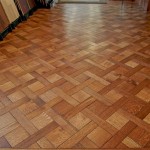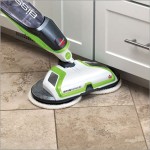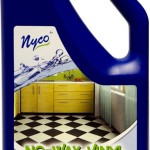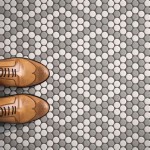How To Strip Hardwood Floors Without Sanding
Refinishing hardwood floors can revitalize a home, bringing warmth and beauty to living spaces. While sanding is the traditional method, it can be a dusty and time-consuming process. Fortunately, there are alternative methods to strip hardwood floors without sanding, making it a viable option for those seeking a less invasive or less labor-intensive approach. These methods generally involve chemical strippers, which, when used safely and correctly, can effectively remove old finishes, preparing the floor for a fresh coat of stain or sealant.
This article will delve into the process of stripping hardwood floors without sanding, outlining the necessary preparations, tools, and techniques for a successful outcome. The considerations of safety and proper waste disposal will also be addressed, ensuring a responsible and environmentally conscious approach to floor refinishing.
Understanding the Benefits of Stripping Without Sanding
Stripping hardwood floors without sanding offers several benefits that make it an attractive alternative to the traditional sanding method. First and foremost, it significantly reduces dust. Sanding generates a substantial amount of airborne dust that can be difficult to contain and clean up, potentially posing health risks, especially for individuals with respiratory sensitivities. Chemical stripping, on the other hand, minimizes dust production, creating a cleaner and more comfortable working environment.
Secondly, stripping avoids the potential for damage to the hardwood itself. Aggressive sanding, particularly by inexperienced individuals, can inadvertently damage the surface of the floorboards, leading to unevenness, gouges, or even the removal of too much material, especially on floors with thin veneers. Chemical stripping gently lifts the old finish without abrading the wood surface, preserving the integrity and character of the floor. This is particularly important for antique or historically significant floors, where preserving the original wood is paramount.
Another advantage is the preservation of intricate details. Sanding can round off or obliterate fine details, such as decorative inlays, borders, or custom designs. Chemical stripping allows these intricate features to remain intact, adding to the unique aesthetic appeal of the floor. This is a crucial consideration for homes with original or period-appropriate flooring.
Finally, stripping can be a faster option than sanding in certain situations. While the chemical application process requires patience and attention to detail, it can be more efficient than multiple rounds of sanding with different grits, especially when dealing with floors that have multiple layers of old, stubborn finishes. This can save time and labor, making it a worthwhile consideration for DIY enthusiasts and professional contractors alike.
Preparing for the Stripping Process
Proper preparation is critical for a successful stripping project. Before beginning, ensure adequate ventilation in the work area. Open windows and doors, and consider using fans to circulate air. This is essential to minimize exposure to potentially harmful fumes from the chemical stripper.
Next, protect yourself. Wear appropriate personal protective equipment (PPE), including chemical-resistant gloves, eye protection (goggles or a face shield), and a respirator. A respirator will protect your lungs from exposure to harmful vapors. Old clothing or disposable overalls are also recommended to prevent the stripper from damaging your clothes.
Protect the surrounding areas of the room. Cover any furniture, walls, or fixtures that you do not want to be exposed to the stripper with plastic sheeting or drop cloths. Use painter's tape to secure the edges of the protective coverings and to prevent the stripper from seeping underneath. Remember to remove any rugs, curtains, or other items that could absorb fumes or be damaged by the chemicals.
Before applying the stripper to the entire floor, test it in a small, inconspicuous area. This will allow you to assess how effectively the stripper removes the existing finish and to determine the appropriate dwell time (the amount of time the stripper needs to sit on the surface to loosen the finish). Follow the manufacturer's instructions for the dwell time, but be prepared to adjust it based on your test results. This test patch will also reveal any unexpected reactions between the stripper and the wood or the underlying finish.
Clean the floor thoroughly before applying the stripper. Remove any loose debris, dirt, or wax using a vacuum cleaner and a damp mop. Avoid using excessive water, as this can damage the hardwood floor. If the floor has a wax coating, you may need to use a wax stripper before applying the chemical stripper. Ensure the floor is completely dry before proceeding.
Step-by-Step Guide to Stripping Hardwood Floors
Once the preparatory steps are complete, the actual stripping process can begin. Start by carefully reading and following the manufacturer's instructions for the specific chemical stripper you are using. Different strippers may have different application requirements and safety precautions.
Apply a thick, even coat of the stripper to a small section of the floor (approximately 3 feet by 3 feet). Use a paint brush or roller to apply the stripper, ensuring that the entire surface is covered. Avoid applying the stripper too thinly, as this may result in incomplete removal of the finish. Do not allow the stripper to dry out on the floor, as this can make it more difficult to remove.
Allow the stripper to dwell for the recommended amount of time, as determined by the manufacturer's instructions and your test patch. During the dwell time, the stripper will penetrate the old finish, causing it to soften and blister. Monitor the progress of the stripping process. You may need to adjust the dwell time depending on the number of coats of finish and the type of finish.
Once the dwell time is complete, use a plastic scraper to remove the softened finish. Scrape in the direction of the wood grain to avoid scratching the floor. Dispose of the scraped finish in accordance with local regulations for hazardous waste disposal. Work carefully and methodically to remove as much of the old finish as possible.
After scraping, use a stripping pad or a nylon brush to scrub the floor and remove any remaining residue. A stripping pad is a coarse abrasive pad that is designed to remove stubborn finishes without damaging the wood. A nylon brush can be used to reach into corners and crevices. Use a clean bucket of water and a sponge to rinse the floor thoroughly. Change the water frequently to prevent the residue from being redeposited onto the floor.
Neutralize the floor after stripping. Chemical strippers can leave behind a residue that can interfere with the adhesion of new finishes. Use a neutralizing solution recommended by the stripper manufacturer to neutralize the floor and remove any remaining residue. Follow the manufacturer's instructions for the application and dwell time of the neutralizing solution.
Allow the floor to dry completely before proceeding to the next step. The drying time will vary depending on the humidity and temperature of the room. Ensure that the floor is completely dry before applying a new finish. Use a dehumidifier or fans to speed up the drying process, if necessary. This may take 24-48 hours.
Inspect the floor for any imperfections, such as remaining residue or unevenness. If necessary, use fine-grit sandpaper (220-grit or higher) to lightly smooth out any imperfections. Be careful not to sand too aggressively, as this can damage the wood. Vacuum the floor thoroughly to remove any dust from sanding.
Apply a new finish to the floor, following the manufacturer's instructions. Choose a finish that is appropriate for hardwood floors and that meets your aesthetic preferences. Apply multiple coats of finish, allowing each coat to dry completely before applying the next. Lightly sand between coats with fine-grit sandpaper to ensure a smooth and even finish.
Safety Precautions and Waste Disposal
Safety is paramount when working with chemical strippers. Always work in a well-ventilated area to minimize exposure to fumes. Wear appropriate personal protective equipment, including chemical-resistant gloves, eye protection, and a respirator. Avoid contact with skin and eyes. If contact occurs, rinse immediately with plenty of water and seek medical attention.
Store chemical strippers in a safe place, out of reach of children and pets. Keep the containers tightly closed to prevent spills and evaporation. Do not mix different types of strippers or chemicals, as this can create hazardous reactions.
Dispose of used stripper, scrapings, and cleaning materials properly. Chemical strippers are considered hazardous waste and should not be disposed of in regular trash. Contact your local waste management agency for information on how to properly dispose of hazardous waste in your area. You may need to take the waste to a designated hazardous waste collection site.
When cleaning tools and equipment, follow the manufacturer's instructions for the stripper you are using. Some strippers may require the use of specific solvents or cleaning agents. Dispose of used cleaning materials properly, as they may also be contaminated with hazardous waste.
Be aware of the potential for fire hazards. Some chemical strippers are flammable. Do not use them near open flames or sources of ignition. Ensure that the work area is free of flammable materials, such as rags or paper towels. Dispose of used rags and paper towels in a metal container with a tight-fitting lid to prevent spontaneous combustion.
By following these safety precautions and waste disposal guidelines, you can minimize the risks associated with stripping hardwood floors without sanding and ensure a safe and environmentally responsible project.

Refinishing Hardwood Floors Without Sanding Diy For Under 60

Non Sandable Floor Refinishing N Hance

How To Refinish A Wood Floor Without Sanding Under 1 Hour

Refinishing Hardwood Floors By Stripping

Refinish Hardwood Floors Without Sanding Paint And Glue Removal

How To Refinish Hardwood Floors The Easy Way This Old House

Can I Stain My Wood Floors Without Sanding 5 Simple Steps

How To Paint Wood Floors Without Sanding The Heathered Nest

Can I Stain My Wood Floors Without Sanding 5 Simple Steps

How To Give A Wood Floor Face Lift Without Sanding Stripping Or Priming Diy Hometalk
Related Posts

